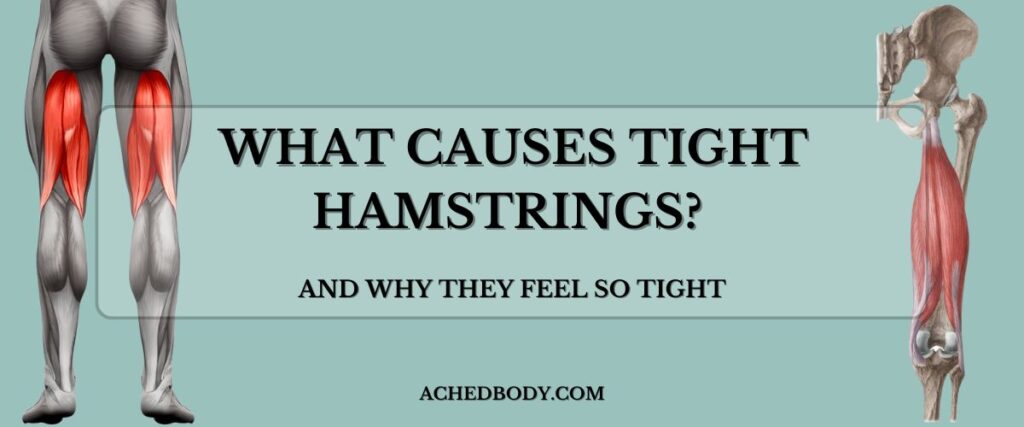
The Causes of Your Hamstring Tightness (Free Video)
Tight hamstrings are a common complaint that can affect your mobility and daily life.
In this guide, I share:
Learn more about stretching with my Ultimate Stretch Guide.
Learn more about myofascial release with my Ultimate Guide to Trigger Point Therapy.
Understanding the Anatomy of the Hamstrings
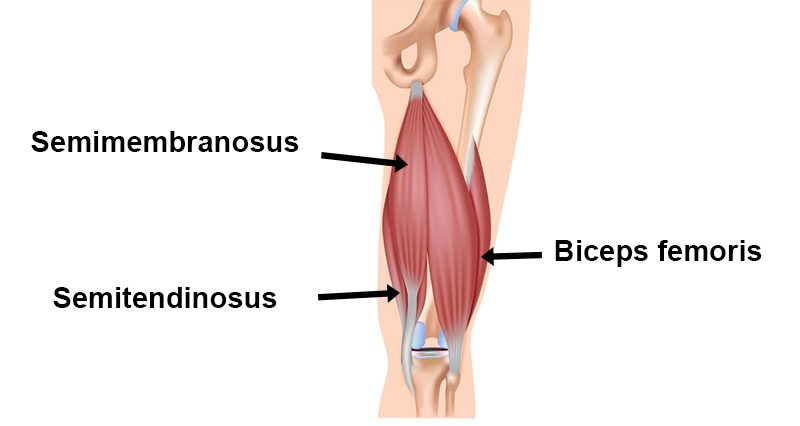
The hamstrings are three muscles located at the back of your thighs. Four if you count the short and long heads of the biceps femoris separately.
Their main actions are bending your knee and extending your hip. They also work together to stabilize your lower body during activities.
As you can see below, the muscles wrap around the knee joint on both sides and they run all the way up to the hip bone where they insert on the ischial tuberosity (not important to know).
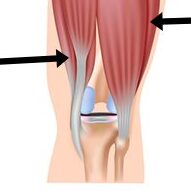
The point is, they do a lot and they help you move at two important joints.
Given their involvement, if your hamstrings develop tightness, it’s important to take care of it!
But how does that tightness happen?
Common Causes of Tight Hamstrings
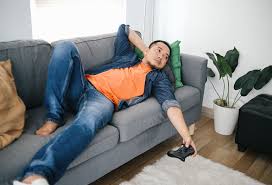
Several factors contribute to the development of tight hamstrings. The main ones are below:
A sedentary lifestyle
If there is one way to shorten your hamstrings, making them weaker over time, it’s prolonged periods of sitting and inactivity.
Overuse or repetitive strain
On the other hand, overuse or regular use will force the muscle to tear and repair, which is a good thing.
But if the muscle never gets stretched or worked on to release knots, all of that activity will turn your hamstrings into a tight ball of tissue, stuck together where it shouldn’t be.
Inadequate warm-ups
If you never warm up before exercise, you’re asking your muscles to backfire on you someday. If you’re lucky, they will just become more tight over time.
Most people will eventually pull a hamstring, tear a hamstring, or develop joint problems if the muscle is left untreated.
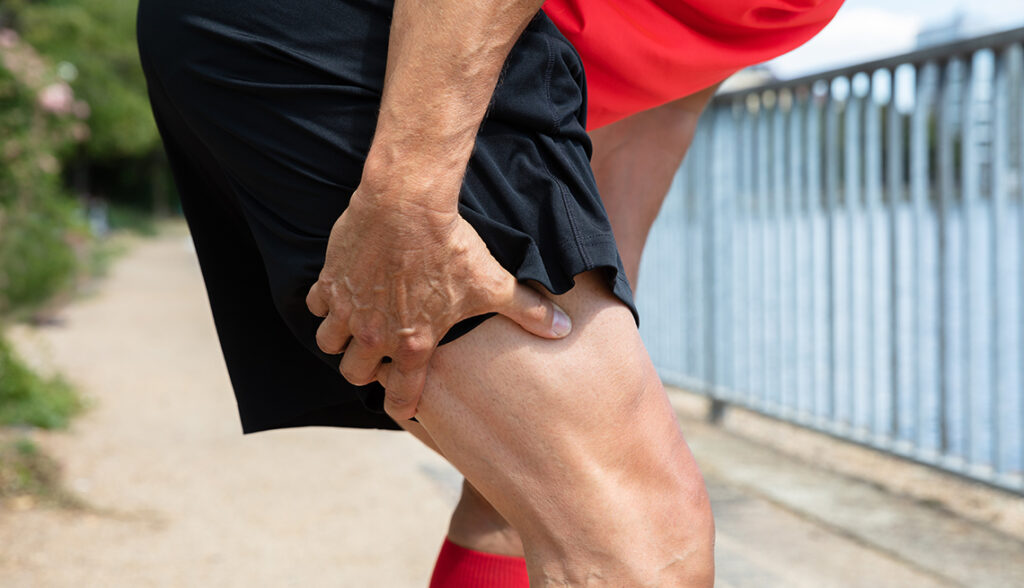
Smaller issues that build up
Other things like previous injuries, poor posture and not enough recovery time will create imbalances that put extra stress on the hamstrings.
Why Do They Feel So Tight?
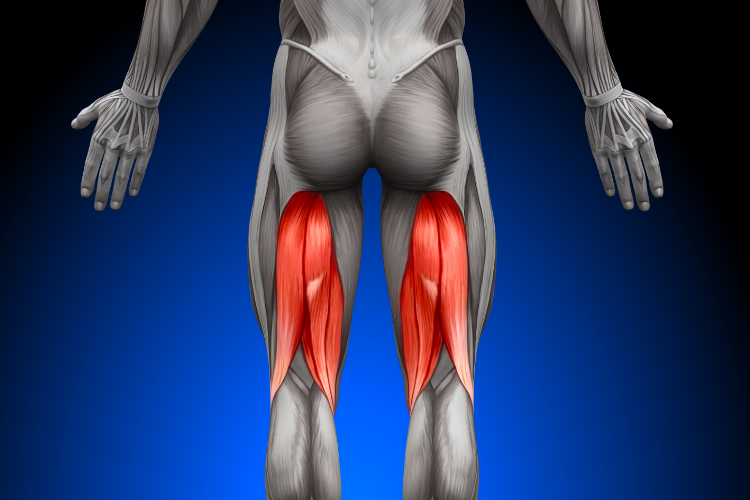
The sensation of tightness in the hamstrings is a body-brain connection that is telling you about the pressure in your body.
There are force and tension sensors all over the body. In muscle tissue they are especially prevalent.
If left untreated the tension will turn into small sections of muscle that are stuck together. This is called a trigger point or muscle knot.
On top of that, the connective tissue, or fascia, surrounding the hamstrings can become stiff and less pliable, further contributing to the overall feeling of rigidity.
This is why your hamstrings often feel so restricted and can lead to discomfort both in the legs and in related areas such as the lower back, hips or knees.
How To Fix Your Hamstring Tightness
Now that you know why they feel tight, I can tell you how I fix hamstrings to keep them in the best shape possible with little effort each day.
There are two steps to get back on track. Three if you’re an overachiever.
Stretching

Step one is learning how to stretch your hamstrings for just 5 minutes each day.
I made this in-depth article on how to stretch your hamstrings from simple to advanced stretches so that you can progress over time.
Stretching is fundamental to fixing this problem, especially if you sit a lot.
Sitting will shorten your hamstring over time and is one of the biggest causes of knee pain, hip pain, low back pain and so much more.
Myofascial Release
It sounds fancy, but it is not hard. I promise.
These are self-release techniques like foam rolling or using a trigger point ball to break up the knots that stretching can’t get rid of.
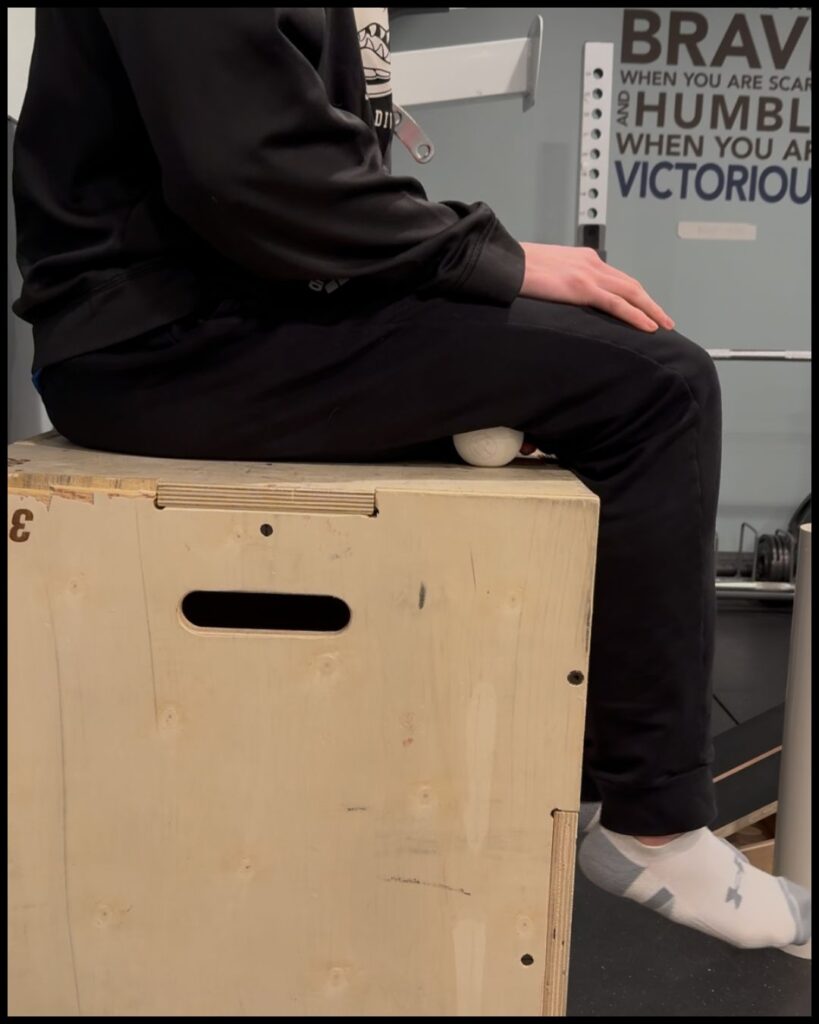

Use my hamstring trigger point guide to get the scoop on how I target the hard-to-get areas for the most relief (or start with this video).
I use this 2-3 times a week to keep my hamstrings healthy.
Overachievers
If you are following those guides and feel a lot better but you want more, the last thing I recommend is strengthening exercises that target the hamstrings.
I don’t have a guide for that on this website yet, but I highly recommend the knees over toes guy and his hamstring exercises to get the final step in bulletproofing your hamstrings.
What’s Next?
Hopefully this article helps you understand why your hamstrings are tight in the first place and how to get on track to fix them.
Use my other hamstring related articles and videos on my youtube channel to fix the issues, and reach out if you have any other questions using the comments below! I read them all and can’t wait to help.
Good luck!
-Nick